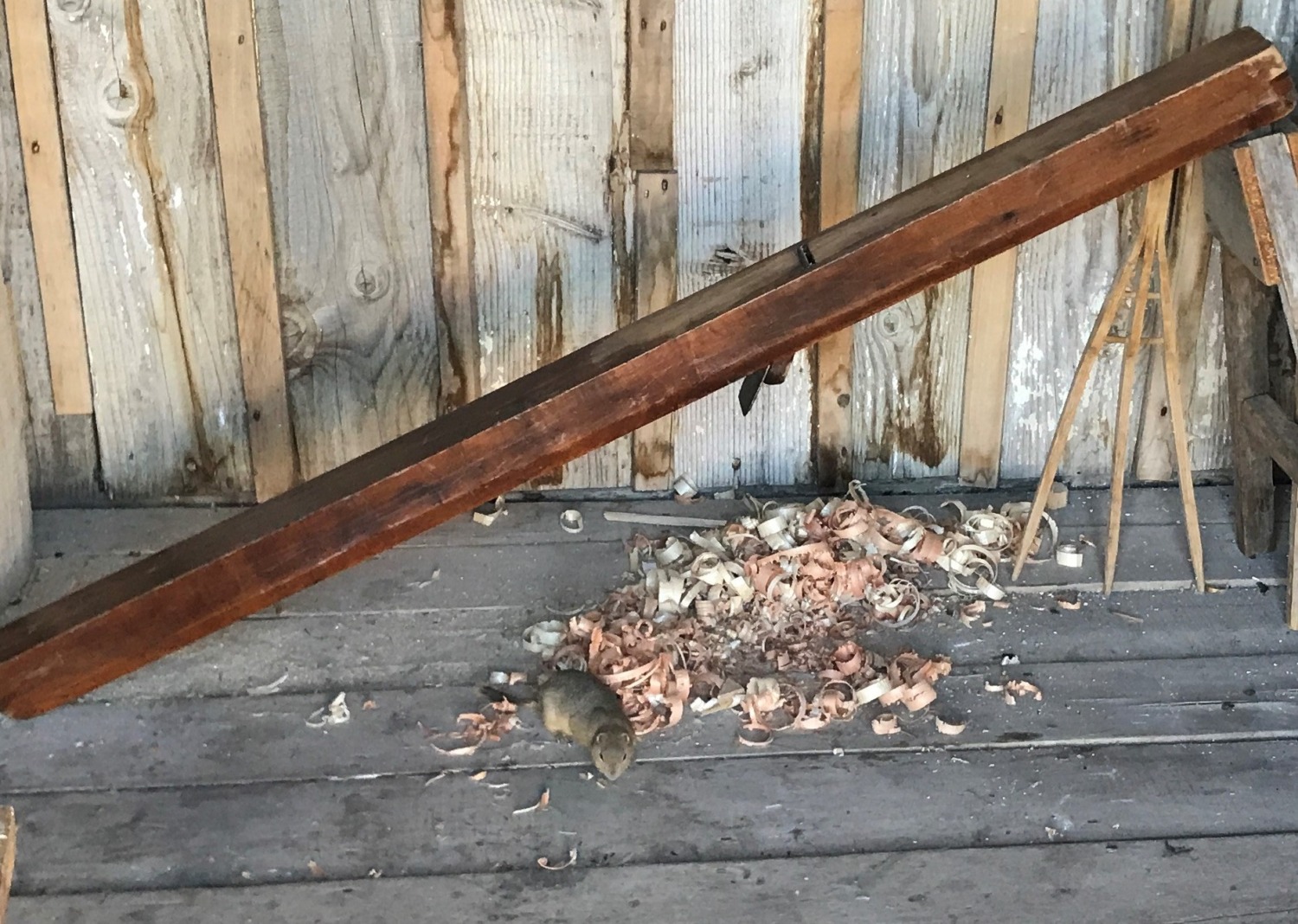The most frequent visitors / residents of Fort Union Trading Post are Richardsons Ground Squirrels. Tom and I had never seen these members of the Rodentia family before and we have been entranced watching them scurry around the fort.
Richardsons Ground Squirrels – Urocitellus richardsonii – are small (adults weight about a pound) and look a lot like Prairie Dogs. In fact, most of our human visitors think they are Prairie Dogs, especially if they have just visited Theodore Roosevelt National Park with its Prairie Dog towns. Richardsons Ground Squirrels are sometimes called gophers, but they are a separate species from gophers and prairie dogs. The ground squirrels are about half the size of prairie dogs and have a longer tail. They also live in smaller communities and dig their tunnels from the side instead of making a mound on top.
The Richardsons Ground Squirrels at the park bustle around eating all day long. I watched one of them for a while as it lay out on the grass on its stomach, occasionally turning its head to grab another bunch of grass and leisurely munch on it. They aren’t scared of the people walking around, but they scurry away if anyone gets too close. Small children often try to catch them, because they are so cute, but they can leave a nasty bite if you do manage to catch them. Although I enjoy watching them, their holes are a nuisance and cause lots of turned ankles for people who aren’t looking where they walk. When I take my walks in the morning, I keep my eyes on the ground watching for their holes.
Richardsons Ground Squirrels hibernate from September through March, so right now they are busy putting on as much weight as possible. They are very territorial, and don’t like other ground squirrels intruding on their burrows. They are also called “flickertails” because their long tails move so rapidly. One of North Dakota’s nicknames is “The Flickertail State.” They are named after the Scottish naturalist, Sir John Richardson, who discovered them while on a British expedition to map the Arctic coast. The grounds squirrels have an adorable high-pitched peep (click here to hear it) that they sometimes chirp at us when we are working.
There are two other species that we have been surprised to find here in northern North Dakota. The first is the pelican. I think of the pelican as a coastal bird and am used to seeing it at Fort Frederica. But it is common to see it here in North Dakota along the Upper Missouri River during the summer. The American White Pelican breeds in North Dakota. In fact, half of these pelicans breed in Chase Lake National Wildlife Refuge in central North Dakota in May and June. We often see their distinctive white bodies and black flight feathers overhead when we are out walking close to the river. They migrate south when it gets cold in October.
The second surprising species is the mosquito. Although we expected some mosquitoes, the mosquitoes here are tiny but travel in huge swarms. They are so small that I don’t even hear them. I can see them but don’t hear them around me until they are munching on me. I wake up every morning with new mosquito bites because they are so hard to keep outside. Not only do they attack during the night, the swarms are out all day long. They are just as bad in the morning as they are in the afternoon as they are in the evening. The ubiquitous insect has cut short many walks. Although I don’t mind putting on insect repellent in the morning, I hate reapplying it before bed, so we aren’t spending much time outside in the evenings.

These are some of the delightful and annoying species Tom and I have discovered in North Dakota. Every place has its joys and delights as well as its challenges.




